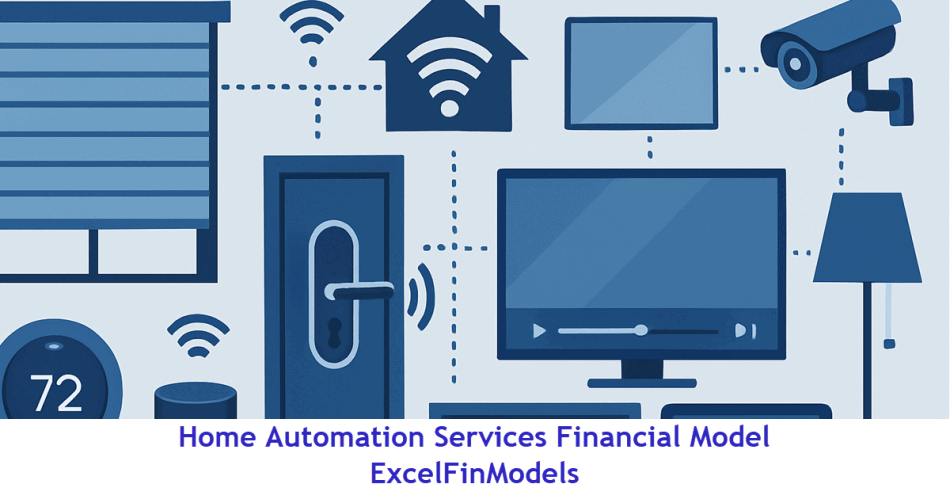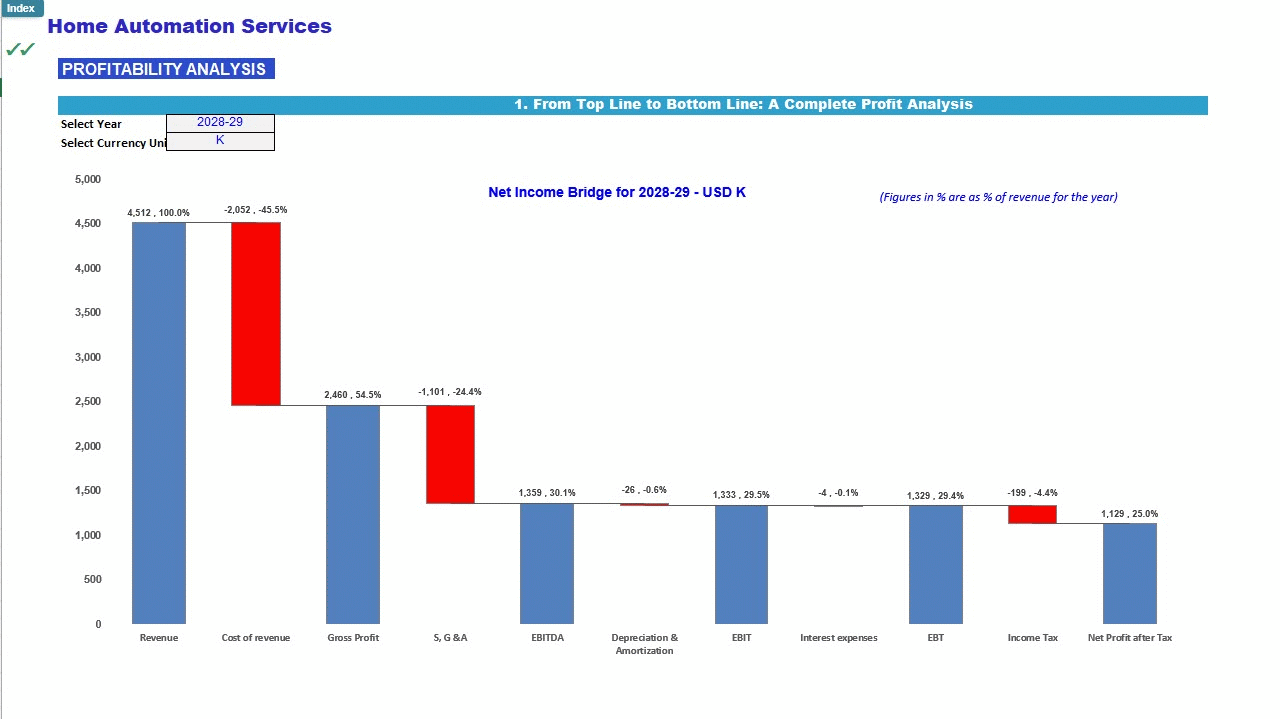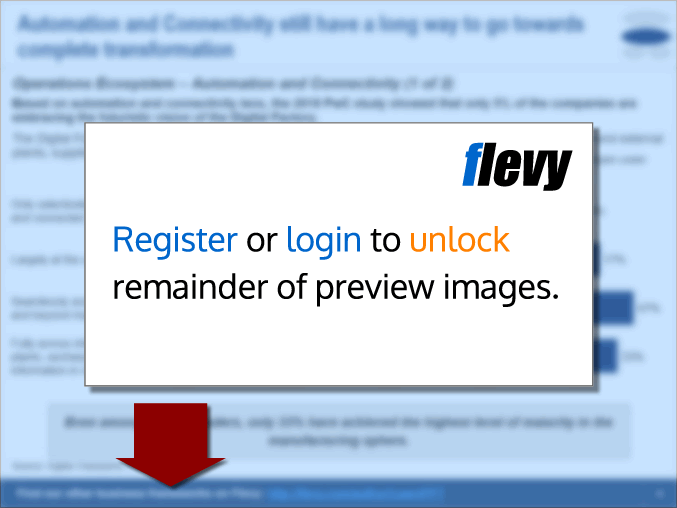Home Automation Services Financial Forecast Model (Excel XLSX)
Excel (XLSX)
BENEFITS OF THIS EXCEL DOCUMENT
- Enables structured financial planning through detailed revenue, cost, and staffing forecasts tailored to smart home installation businesses.
- Supports investor presentations and funding applications with built-in profitability analysis, cash flow projections, and valuation insights.
- Facilitates data-driven decision-making by providing a clear breakdown of service-level margins, technician utilization, and capital expenditure planning.
INTEGRATED FINANCIAL MODEL EXCEL DESCRIPTION
A Home Automation Services company specializes in delivering customized smart technology solutions for residential and commercial properties. Utilizing cutting-edge IoT devices and certified installation practices, these businesses focus on enhancing convenience, energy efficiency, security, and entertainment through integrated automation systems. Services typically include smart lighting installation, home security systems, climate control setup, audio-visual automation, voice assistant integration, networking solutions, and system programming.
This financial model is meticulously designed to analyze and forecast the financial performance of a home automation business, capturing key revenue and cost drivers specific to the smart technology installation industry. It focuses on revenue generation from on-site service activities, segmented by service categories.
The model delivers a 5-year forecast horizon (60 months) starting from the first forecast month defined in the assumptions tab and includes placeholders for up to 36 months of historical financial data. Designed specifically for home automation service providers, the model incorporates operational variables such as the number of automation technicians, billable hours, service mix, and days to operations commencement.
This financial model serves as an essential resource for internal planning, pricing strategies, investment presentations, and financing applications tailored to home automation businesses.
Financial Model Structure
The model is organized into the following six core sections:
1. Cover Tabs
• Navigation and instructional guidance to help users navigate the model efficiently.
2. Input Tabs
Revenue Assumptions
• Number of home automation technicians
• Billable hours per technician per day
• Operating days per month
• Service categories (e.g., smart lighting installation, home security setup, AV automation, thermostat & climate control, voice assistant integration, networking & Wi-Fi optimization, system programming)
• % of total billed hours allocated to each service type
• Average fee per service type
General Assumptions
• Company name, start date, currency
• Inflation rate, payroll tax, corporate tax
Direct Cost Assumptions
• Cost of home automation devices, supplies, and installation tools per service type
• Transportation and subcontractor costs
• Salaries for technicians, supervisors, and support staff
S,G&A Expenses
• Fixed and variable expenses including rent, utilities, administrative payroll, and marketing
CapEx Assumptions
• Capital expenditures for installation equipment (e.g., testers, programming tools), service vehicles, furnishings, and office setup
• Depreciation schedules for fixed assets
Working Capital Assumptions
• Inventory turnover assumptions (smart devices and equipment)
• Accounts receivable/payable cycles
• Minimum cash buffer
Financing & One-Time Expenses
• Loan details, fundraising assumptions
• Initial setup costs (licensing, branding, launch marketing)
3. Output Tabs
• Financial Dashboard
• Sources and Uses of Funds
• Financial Ratios
• Profitability Analysis
• Cash Flow Analysis
4. Financial Statements Tabs
• Monthly and annual projections for:
• Profit & Loss Statement
• Cash Flow Statement
• Balance Sheet
5. Calculation Tabs
• Detailed forecasting of:
• Revenue and cost of services
• Staffing-related expenses
• Capital expenditures
• Financing and debt servicing
6. Advanced Analysis Tabs
• Valuation Model
• Key Performance Indicators (KPIs)
• Revenue analytics
• Expense breakdowns
• Balance Sheet insights
Technical Specifications
• No VBA or Macros: Ensures maximum compatibility
• Circular Reference-Free: Clean and stable calculations
• Excel Compatibility: Fully functional with Excel 2010 and newer versions
Validation Checks
The model includes automated validation tools:
• Green ticks (✓) confirm valid and complete inputs
• Red crosses (✗) highlight missing data or structural errors
Why Choose This Model?
This financial model is specifically designed for home automation service businesses, offering comprehensive tools for financial planning, investor communications, and strategic growth execution. It adapts to the unique characteristics of the automation services industry—including labor-intensive delivery, customizable service packages, and evolving smart tech hardware/software integration.
Whether you're launching, fundraising, or scaling your business, this model provides clarity, financial control, and operational insight.
For customizations or professional support, our team is available to help tailor the model to your unique business setup and strategic goals.
Got a question about the product? Email us at support@flevy.com or ask the author directly by using the "Ask the Author a Question" form. If you cannot view the preview above this document description, go here to view the large preview instead.
Source: Best Practices in Integrated Financial Model Excel: Home Automation Services Financial Forecast Model Excel (XLSX) Spreadsheet, ExcelFinModels









